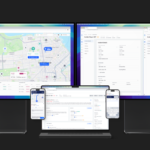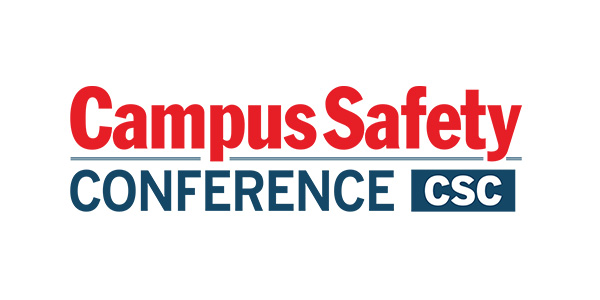A Campus Safety Administrator’s Dilemma-Reducing Costs While Increasing Presence
With each passing academic year, the topic of campus public safety continues to grow in importance. The critical issue that campus administrators must contend with is how to increase their public safety presence while, at the same time, reducing their operating costs. A vital additional factor in the campus safety market is the “Green” movement in which universities are proactively seeking opportunities to reduce their carbon and
pollution “footprints.”
Since 2006, progressive campuses like the University of Southern California, Princeton University, Florida State University, UNLV, UCLA, and Duke University have turned to electric personal mobility vehicles such as the T3 Series by T3 Motion, Inc. to address increasing their public safety patrol presence while reducing costs and yetstill being able to go “green.”
Going Green Today and Saving Green For Tomorrow
In the past, the benefits of “going green” often came with higher costs to annual budgets; non-polluting or alternative-powered technologies generally came with a higher price tag. This budgetary dynamic has dramatically shifted in certain product categories like campus patrol vehicles. Not only are there “green” options in this sector, they are often likely to be much more cost-effective than petroleum-based product offerings.
Annually, public safety departments are reducing fuel costs by thousands of dollars when they deploy T3 Series vehicles. The T3 Series averages about 10 cents in electrical recharge costs per shift. For departments with 24 hour patrol needs, the T3 is generally costs less than forty cents a day to operate.
Contrast this to the cost of gasoline or diesel needed to patrol multiple shifts, and the difference is dramatic. In most cases, T3 Series customers can pay for the cost of one T3 within a year on fuel-savings alone.
In terms of carbon-based emissions, one T3 Series customer, Simon Property Group (a national provider of retail and lifestyle center security), estimates that one T3 Series vehicle can effectively replace one fossilfueled vehicle that creates over five tons of pollution annually. According to George Caraghiaur, Simon Property Group Vice President of Energy Services, one T3 Series vehicle can reduce the CO2 footprint by 10,000 pounds each year.
Technological Benefits for Today and Tomorrow
The benefits of the T3 Series technology are apparent to the campus safety sector, not only in the beginning, but over the entire duration of the T3 Series deployment.
On a daily basis, T3 Series campus safety officers are reporting more interaction with the public. Campus safety officers attribute this to the iconic design of the T3. There is tremendous public interest in the vehicle and that enables an active two-way conversation between public safety officers and the people they protect.
Terms like “Community Policing,” “Command Presence,” and “Force Multiplier” are being used by T3 Series customers to describe the indoor and outdoor patrol attributes of the T3.
Range used to be a huge issue with electric vehicles; your asset is only as good as the charge remaining. Once the asset has depleted its charge, usually the entire vehicle has to be committed to a recharge. For many agencies, this meant having multiple assets (e.g. golf carts) that had to be carefully allocated to ensure multiple-shift operation.
The revolutionary T3 Series changes the way electric mobility vehicles can be deployed. Due to the hotswappable power modules (“batteries”), one T3 Series vehicle can run 24 hours-a-day with just two sets of (Type B) power modules. With an average run time of four to 10 hours (depending on factors like rider weight, terrain, and average speed), the T3 can run off one set of power modules while the other set is recharging. From 0% to full charge takes less than three hours for T3 Series Type B power modules; in fact, most recharging of T3 Series power modules occurs from 50 to 60% to full which takes about one hour.
Custom(er) Designed Functionality
The design and functionality of the T3 Series personal mobility vehicle for the law enforcement and security sectors is no accident. Rather than build a vehicle that needs to be “upfitted” or retrofitted for professional applications, the T3 Series is the result of over three years of prototypes and evaluation in which the law enforcement community was a key player in the development of the T3.
By creating a vested relationship with the market they serve, T3 Motion, Inc. has demonstrated the importance of listening to customer’s needs and goals. This dynamic “partnership” was critical to the creation of a zero gas emission personal mobility vehicle that the law enforcement and security community not only wanted, they helped design.
The result-a stable, agile, and robust vehicle that can move officers and equipment in and around campus at speeds up to 20 m.p.h. Add in custom public safety accessories like the On-board Camera System, Equipment Trailer, and License Plate Recognition System, and the T3 opens up a whole new world of applications for colleges and universities.
T3 Series Green Technology Helps Budgets Stay Out of the Red
Whether the need is one shift a day, or around-the-clock, the cost-effective T3 Series electric personal mobility vehicle is ideal for patrols for special events, buildings, parking, business districts, and mixed-use developments.
The bottom line for the Bottom Line-The T3 Series can increase public safety presence at a time of shrinking budgets. Think of the “green” T3 Series as the new black (for your budget).
For additional information, click here.
T3 Motion Inc. February 2009 White Paper












